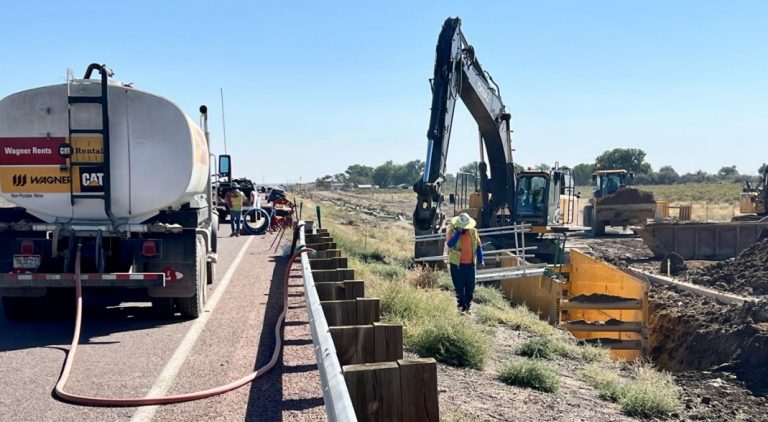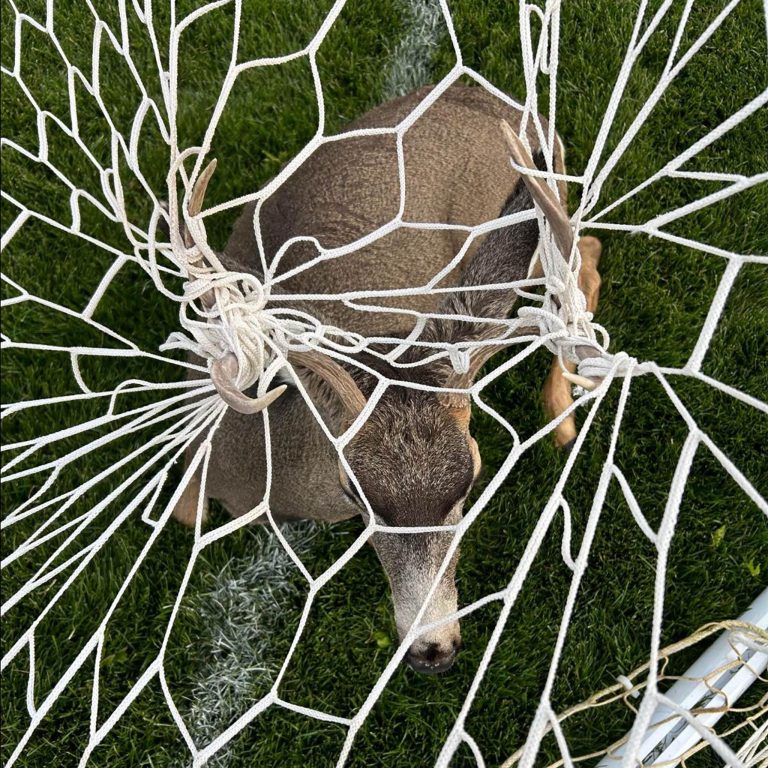Southeastern Colorado Water Activity Enterprise
The Southeastern Colorado Water Activity Enterprise will host a meeting for AVC participants and stakeholders on Thursday, October 24 at 5:30 p.m. at the CSU Extension Office, 27901 County Road 21, Rocky Ford. There is also an option to attend the meeting virtually.
The purpose of the meeting is to provide follow-up information from the June 27, 2024 AVC participant meeting, to update participants on the progress of design and construction of the AVC and to discuss funding opportunities for AVC participants to make improvements within their own systems.
AVC repayment federal legislation moving ahead
As explained in September, legislation to reduce interest and extend the repayment period for the AVC was introduced September 10 by U.S. Senators Michael Bennet and John Hickenlooper.
Representative Lauren Boebert is the sponsor of the legislation in the U.S. House of Representatives.
The Senate Energy and Natural Resources Committee held a hearing on the proposed bill on September 11.
Mark-up on the bill is scheduled for November 19, which is the next step toward passage. Final action won’t occur until an appropriations bill is passed.
The Southeastern Colorado Water Activity Enterprise Board of Directors requested the action at its August meeting in light of the updated cost estimate for the AVC released in June by Reclamation. The intent of the board is to reduce costs to participants as much as possible.
Funding Toolbox to be shared with AVC participants
The AVC Committee heard plans for a Funding Toolbox that will help AVC participants obtain funding for improvements needed in their water systems.
The unveiling of the Funding Toolbox will be at the October 24 AVC participants meeting in Rocky Ford.
In 2022, the enterprise completed a series of preliminary engineering reports for each of the 39 participants in the AVC.
Those reports identified improvements within each of the water systems that would be needed in order to connect with the AVC trunk line, and to reduce losses and improve efficiencies within those water systems.
In 2023, the enterprise shared those reports with participants. In some cases, the reports were useful in helping to respond to compliance orders from the Colorado Department of Public Health and Environment, while others may have viewed the reports as guidelines toward making system improvements that are needed with or without AVC.
This month, the enterprise will begin to assist communities with the all-important question of how to fund improvements.
The Funding Toolbox looks at strategy, timing and financial resources availability.
Some private water companies are already moving to form authorities in order to access better funding opportunities. The Enterprise also has information on new funding opportunities for water systems where emerging contaminates such as PFAS are detected.
The Enterprise also is completing individual meetings with participants on water resources and operation and maintenance systems.
AVC Committee gets Enterprise funding plan update
The AVC Committee in September heard an update on the state funding plan which seeks to leverage $30 million in Colorado Water Conservation Board grants to offset the principal on State Revolving Fund loans.
The SRF loans have principal forgiveness of 50 percent, which will allow a total of $60 million in construction on spur and delivery lines.
The enterprise is working on an agreement among the CWCB, Colorado Water Resources and Power Development Authority and Otero County as fiscal agent for the Enterprise to set the plan in motion.
The committee also approved two contracts related to spur and delivery line funding.
The first was a $40,854 contract with Swiftwater Solutions LLC to prepare documents related to SRF loans for construction of delivery lines for the Crowley County and Fowler reach of AVC. The funding packages are being sought to assure service is ready as the AVC trunk line reaches those communities.
The committee also voted to ratify a contract with the city of Lamar, which has dedicated $90,000 in American Rescue Plan Act funds toward designing a vault to serve Lamar at the end of the AVC line. Other cities and counties have contributed more than $3 million in ARPA funds under the 2021 federal law.
The enterprise board will consider approval of both items at its October meeting.
The committee will meet at 10 a.m. on Thursday, October 24, 2024 at the District headquarters, 31717 United Avenue in Pueblo. The meeting also can be accessed virtually. Check the calendar on the District website : https://www.secwcd.com
Outreach: Valley groups get update on AVC
Two Arkansas Valley groups had the opportunity to hear about the Arkansas Valley Conduit on Wednesday, September 18.
The Southeast Business Retention Expansion Attraction group met at Otero College in La Junta to hear an update by SECWCD Senior Policy and Issues Manager Chris Woodka about the history and the current progress of the AVC.
SEBREA is made up of County Commissioners from five of the six counties in AVC (Bent, Crowley, Kiowa, Otero and Prowers) as well as Baca County, Otero College and Lamar Community College.
Woodka explained that since the AVC Project was authorized by the Fryingpan-Arkansas Project in 1962, the people associated with the effort are mostly new to the process. For many years no one thought it would be built, but changes in federal legislation, the efforts of Arkansas Valley citizens and the work of the Southeastern Water Activity Enterprise are bringing the AVC to reality. He added that economic development, which is the focus of SEBREA, has always been a primary purpose of AVC, ranking up there with water quality.
Woodka also presented a progress report to the Municipal-Ag Committee of the Arkansas Basin Roundtable at the offices of the Arkansas Groundwater and Reservoir Association in Fowler on the same day.
The committee is working with former Division II Engineer Bill Tyner to develop a study of the morphology of the Arkansas River and how this could affect sedimentation and return flows. An organizational meeting for the study will be at Otero College from 3-7 p.m. on November 8, 2024.
AGRA provides groundwater augmentation services for Fowler, Manzanola, La Junta, Las Animas, Swink and Sugar City, which are all part of the AVC.
Cultural resource identification essential to AVC Project
As with any significant project that affects the land, a thorough cultural resources survey is an essential component of the Arkansas Valley Conduit planning process. These surveys serve to identify and protect important archaeological, historical, and cultural sites that may be affected by construction activities. This process—vital for preserving our shared heritage—is required by federal law to ensure that valuable resources are documented, preserved, or mitigated before any ground disturbance occurs.
Several federal laws mandate cultural resource surveys for projects like the AVC pipeline.
The National Historic Preservation Act of 1966, particularly Section 106, requires federal agencies to consider the effects of their undertakings on historic properties. This means that before construction begins, agencies must identify and assess any historical or archaeological sites that could be impacted and consult with stakeholders, including state historic preservation offices, Native American tribes, and local communities.
The National Environmental Policy Act (NEPA) of 1969 also plays a critical role in ensuring that cultural resources are considered in project planning. Under NEPA, federal agencies are required to evaluate the environmental and cultural impacts of proposed projects and explore alternatives that minimize harm.
The Archaeological Resources Protection Act (ARPA) of 1979, works to ensure that irreplaceable cultural resources are protected during the development of infrastructure projects.
For landowners whose properties may be surveyed as part of the AVC project, it is important to understand what to expect when an archaeologist visits. The process is thorough, but it is designed to be minimally invasive and respectful of private land. Archaeologists will typically conduct a visual inspection of the land, looking for any surface-level artifacts, historical structures, or features of interest. In some cases, small test excavations, known as shovel tests, may be performed to check for buried artifacts or cultural layers. These tests involve digging small holes — usually no more than a few feet deep and wide — and carefully sifting through the soil. If anything of significance is found, the archaeologist will document it in detail, photograph the site, and map its exact location. However, it is important to note that the archaeologist’s goal is not to interfere with land use but to identify and record significant cultural resources before construction begins.
Landowners can expect clear communication from the cultural/environmental/realty team throughout the process. If any significant findings are made, the property owner will be informed, and discussions will take place regarding the next steps, which could include avoidance or mitigation strategies to preserve the site.
The goal of cultural resource management is to balance the needs of development with the responsibility to protect our shared history, and landowners play a critical role in that partnership. By cooperating with archaeologists and federal agencies, landowners help ensure that we leave a lasting legacy of respect for the past, even as we build for the future.
If you have any questions for the Bureau of Reclamation about the Arkansas Valley Conduit project, please contact Jeff Bollman, Realty Specialist, jbollman@usbr.gov, Joe Gomori, Project Coordinator, jgomori@usbr.gov, or Anna Perea, Public Affairs Specialist, aperea@usbr.gov.
What’s coming ahead in the next month?
• Arkansas Valley Conduit participants will have the opportunity to hear reports about the progress of the AVC Project at a meeting in Rocky Ford on Thursday, October 24.
• At the meeting, a Funding Toolbox will be discussed. The Toolbox will help participants navigate funding sources for projects needed to hook up to the AVC and to improve their own water systems.
• The enterprise is working toward an agreement with the Colorado Water Conservation Board, Colorado Water Resources and Power Development Authority and Otero County to put $60 million of funding in place for construction of spur and delivery lines.
• The Southeastern Colorado Water Activity Enterprise AVC Committee will meet at 10 a.m. on Thursday, October 24.
• The enterprise board will meet October 17, and take action on two items referred from the committee at its September 26 meeting: A contract with Swiftwater Solutions to assist in application for a State Revolving Fund package to build spur and delivery lines to Crowley County and Fowler; and ratification of a contract with the city of Lamar to design the delivery vault using American Rescue Plan Act funds provided by Lamar.
• Discussions continue about formation of an advisory authority to assist in development of the AVC.
• Meetings are planned with participants to discuss water resources and operation & maintenance of the AVC. These are a continuation of the series of meetings that began in late 2023.



